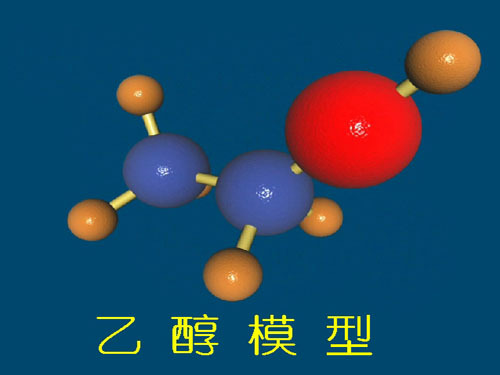Cellulose Ethanol Industrialization in China Started

The industrialization of cellulose ethanol in China has officially started. The reporter learned from an interview with COFCO yesterday that COFCO and other groups have jointly developed a full set of 50,000-ton-class cellulose crate ethanol processing kits for corn straw and other biomass feedstocks. COFCO Bio-Energy (Jian Dong) Co., Ltd. adopted the The 50,000-ton/year cellulosic ethanol demonstration production line constructed by the technology package will start construction at the end of the year. The device will be the first domestic 50,000-ton grade cellulosic ethanol industrial scale installation.
"The cellulose-ethanol technology we developed can convert all the five carbon sugars and six carbon sugars in crop straws, and the unit consumption of ethanol raw materials is reduced by nearly 40% compared to existing technologies. At the same time, we also pioneered the fuel ethanol-biology. The electricity and co-production model of electricity, in the production of fuel ethanol, will be difficult to use the lignin used to generate electricity, so that full and efficient utilization of straw.†Li Bei, general manager of COFCO Bio-energy Division's remarks summarized the cellulosic ethanol The cost advantage of technology. COFCO has been at the forefront of fuel ethanol research and development and industrialization. It has a fuel ethanol capacity of 40% of the country. In 2007, it built the world's first cassava-based non-grain ethanol plant.
Cellulose fuel ethanol is a biomass energy utilization project that has been promoted in recent years in China. According to statistics, China can collect about 900 million tons of straw each year, and remove nearly 200 million tons of straw each year for the production of ethanol, which is used for papermaking, feedstuff, fertilizer conversion, and collection losses. There is sufficient amount of cellulosic ethanol to develop. Raw material protection. According to the person in charge of the technology of the COFCO Group, straw and other agricultural and forestry wastes mainly contain three components: cellulose, hemicellulose and lignin. Lignin is not easily converted and is generally used as fuel; the six carbon sugars produced by cellulose hydrolysis can be used. It is directly used to produce ethanol; the five-carbon sugar (also known as xylose) produced by hydrolysis of hemicellulose is difficult to produce ethanol. The existing domestic cellulosic ethanol technology usually uses this part of the five carbon sugars to produce biogas or xylose series products. Generally, 7 tons of straw can produce 1 ton of fuel ethanol.
COFCO began researching and developing cellulose fuel ethanol technology in 2006. It adopts an advanced technology route for the simultaneous conversion of five-carbon sugars and six carbon sugars to ethanol in foreign countries. Both the cellulose conversion rate and the maturation and ethanol concentration reach international levels. The advanced level has caused a drastic drop in straw consumption per ton of ethanol. The COFCO research and development group also completed a 500-ton/year pilot study within seven years. During this period, more than a dozen universities in the United Nations, related institutes of the Chinese Academy of Sciences, Sinopec Group, Purdue University, Novozymes and other companies in Denmark conquered. A series of technical difficulties, such as raw material pretreatment, enzymolysis, fermentation, distillation, and sewage treatment, obtained 25 national invention patent authorizations, and finally formed a 50,000-ton/year cellulose-based ethanol production process package, which can be 10,000-ton level demonstration equipment. The construction provides technical support.
In accordance with the development of technologies and processes, the industry currently divides fuel ethanol into three categories: first-generation food ethanol produced from corn, wheat, and other grains, and 1.5th crops from cash crops such as cassava, sugarcane, and sweet sorghum stalks. Non-grain ethanol, second-generation cellulosic ethanol based on cellulose materials such as corn stover and corn cob. The policy adopted by China for fuel ethanol is "stabilize 1 generation, develop 1.5 generations, and promote 2 generations." Cellulose ethanol is technically different from food ethanol and non-grain ethanol, and it is the focus of fuel ethanol research and development at home and abroad. Currently, only the United States and Italy have industrial-scale cellulose ethanol devices.
Here you can find the related products in Water Analysis Measurement, we are professional manufacturer of Water Analysis Measurement,PH Meter For Water Testing,Conductivity Meter For Water Testing,Tds Analyzer. We focused on international export product development, production and sales. We have improved quality control processes of Water Analysis Measurement to ensure each export qualified product.
If you want to know more about the products in Water Analysis Measurement, please click the product details to view parameters, models, pictures, prices and other information about Water Analysis Measurement,Ph Meter For Water Testing,Conductivity Meter For Water Testing,Tds Analyzer.
Whatever you are a group or individual, we will do our best to provide you with accurate and comprehensive message about Water Analysis Measurement!
Water Analysis Measurement,Ph Meter For Water Testing,Conductivity Meter For Water Testing,Tds Analyzer
Xi'an Gavin Electronic Technology Co., Ltd , https://www.gaimcmeas.com
